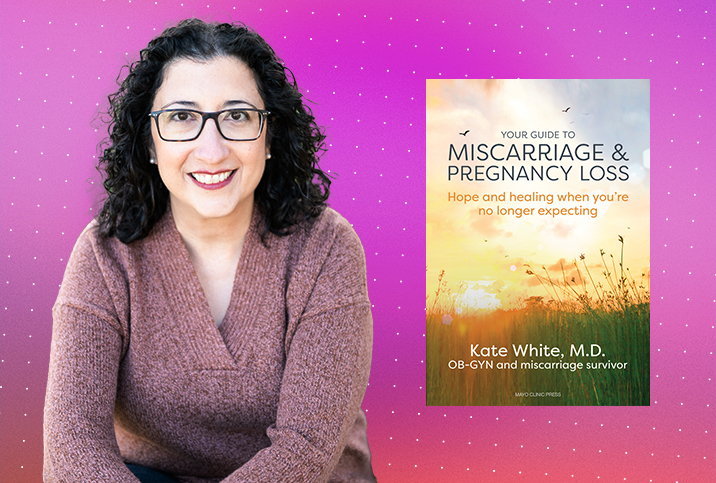When It's Time for an OB-GYN to Step In

There are many important steps that moms-to-be can take, from knowing which activities to avoid during pregnancy to becoming aware of the various complications that can arise. If you've had kids or are currently pregnant, you no doubt know that one of the most important decisions is who will care for you throughout your pregnancy, labor and delivery.
Whether a mom-to-be decides on an OB-GYN (or an obstetrician) or midwife is entirely her decision, as is whether she chooses to have a doula present. But it's important to be aware of the scenarios and situations in which an OB-GYN would be needed. Plus, knowing the difference between midwifery and obstetric care is invaluable for any pregnant person who may be deliberating over who she wants to guide her through the process.
So, with that in mind, let's dive in.
What's the difference between midwifery and obstetric care?
"The goal of both midwives and OB-GYNs is to partner with patients throughout their pregnancy, birth and postpartum," said Jennifer Lincoln, M.D., a board-certified OB-GYN in Portland, Oregon, and medical advisor to the Body Agency. "Midwives specifically focus on low-risk pregnancies and births and are truly expert at these. OB-GYNs can also provide low-risk obstetrical care, but can also manage pregnancies that are higher risk, perform surgeries like C-sections, and often have a focus on gynecological care beyond pregnancy."
Hannah O'Sullivan, a hypnobirthing instructor and National Health Service (NHS) senior midwife with the Positive Birth Company in the United Kingdom, further broke down the differences between midwifery and obstetrics, emphasizing that the two forms of maternity care are rooted in different perspectives.
"In Western health care, the midwifery and medical models are complementary and work together to provide safe care to women, birthing people and babies," she said. "Midwives support women and people to birth in all settings—homes, birthing centers and obstetric units—and provide one-to-one care throughout labor. Obstetricians may be involved with care planning in labor, and support instrumental or cesarean births in an obstetric unit."
"Midwifery care is focused on physiologic birth, working towards a birthing experience that's as natural as possible," added Meggan Zsemlye, M.D., a clinical professor, medical director of inpatient obstetrics and gynecology, and obstetrics liaison to midwifery at University of Colorado Hospital.
However, midwives can offer pain medication depending on where they are birthing and can induce labor if appropriate, Zsemlye said.
"Obstetricians are more interventional and collaborate with midwives in cases where a midwife has a patient that needs more advanced care, like a cesarean section," Zsemlye continued. "The hospital I work in has midwives and OB-GYNs collaborating and working side by side."
When would an OB-GYN need to step in?
"Before pregnancy, this would depend on the midwife's comfort level dealing with preexisting conditions, such as diabetes, hypertension, advanced maternal age and prior C-sections, to name a few," said Kevin Alten, M.D., an associate professor and academic coordinator at Marietta College and owner and president of Alten Women's Health in Cambridge, Ohio.
During labor, there are myriad situations in which an OB-GYN may be called upon.
"In labor, a midwife will consult an OB-GYN if there is the need for an assisted [forceps or vacuum] delivery, cesarean section, or the medical management of [issues] like diabetes or preeclampsia," Lincoln said. "In many scenarios, the midwife and OB-GYN can work together so the patient can still have a midwife-led birth, with the obstetrician managing blood pressures or blood sugars, for example."
"If a patient's baby wasn't tolerating labor well, or if the patient wasn't progressing in labor, a midwife will ask for a consultation with an OB-GYN and they will collaborate on next steps," Zsemlye explained. "Nurse midwives are independent practitioners, so OB-GYNs don't step in unless asked. Occasionally, an OB-GYN will step in if a patient has a serious tear during the birthing process or postpartum hemorrhage."
O'Sullivan indicated that midwives—who are "experts in normal labor and birth"—would require the support of obstetricians in the case of, for example, "longer than expected labor, symptoms of infection in [the] mother, gestative patient or baby, raised blood pressure and presumed fetal distress."
What factors should women consider when choosing between a midwife and OB-GYN?
"Factors to consider [include] the level of complexity of your medical history and/or pregnancy, availability of providers where you want to deliver, the practice model you prefer—for example, some midwives do home visits or offer group prenatal visits—what's covered by your insurance and what you feel most comfortable with," Lincoln said.
Patients with any medical issues that could complicate delivery might also consider using an OB-GYN, Zsemlye agreed.
"Patients often choose to have a midwife if they're seeking a more natural birth, but there is a general lack of knowledge about midwives," she said.
Zsemlye explained there are two types of midwives: "The first is a certified nurse midwife, an experienced nurse who took training in midwifery for multiple years and practices primarily in hospitals, though they can also assist in home deliveries. The second is a direct entry midwife, who primarily attends home births and can have varying levels of certification."
Lincoln added that there are multiple other types of midwives with various titles, including certified professional midwives, traditional midwives and lay midwives.
"Outside of certified nurse midwives, there isn't standardization on what the titles mean, which can often lead to confusion for patients," Lincoln added.
"Sometimes patients think of direct entry midwifery only, but certified nurse midwives can function in a hospital much like an OB-GYN," Zsemlye explained.
Moms-to-be might opt to have a doula present, too.
"A doula is a trained professional who provides continuous physical [and] emotional support to a mother before, during and shortly after childbirth to help her achieve the healthiest, most satisfying experience possible," Alten said.
It's important not to confuse a doula with a midwife or OB-GYN, though; a doula provides additional—not replacement—services.
"Doulas are employed by families to provide expert support but are not qualified professionals to give advice or to facilitate birth," O'Sullivan explained.
It's difficult to quantify how many women choose to use a midwife, as this varies largely by location and personal factors. Zsemlye said she has worked in countries where the use of midwives is more common than OB-GYNs, but it is a location-dependent choice in many cases.
In many areas of the United States, only midwives are available due to a shortage of OB-GYNs, Lincoln said, adding that the ability to use a midwife also varies by region and access to midwifery care models.
Within the U.K.'s National Health Service, all women have a named midwife who provides the bulk of their care, O'Sullivan added.
To sum up...
Ultimately, there are a good deal of scenarios in which an OB-GYN would step in, and it's certainly best to be aware of personal factors that might necessitate opting to use an OB-GYN from the outset. But deciding to use a midwife throughout pregnancy, birth and postpartum time is a choice that certainly has a lot to recommend it.
"I love working with certified nurse midwives as I am confident in their training, and I truly believe that when it comes to low-risk births, they should be the default, with OB-GYNs available as backup [when] needed," Lincoln said.
It's important to listen to your body, ask questions, seek as much information as possible about your options, and find the medical support that will be best for you, your body and your baby. At the end of the day, it's entirely your call—and if you opt for a midwife, always remember that an OB-GYN can step in if any complications arise.




















